Name Kulluk | Cost Over US$200 million | |
 | ||
Namesake Inuvialuktun for Thunder Owner Gulf Canada (1983–1993)Amoco Production (1993)SeaTankers (1993–2005)Royal Dutch Shell (2005–2014) Operator Frontier Drilling (2006–2011)Noble Drilling (2011–2012) Port of registry Builder Mitsui Engineering & Shipbuilding | ||
Kulluk rescue 2012 gulf of alaska
Kulluk was an ice-strengthened drill barge that was used for oil exploration in the Arctic waters. She was constructed by Mitsui Engineering & Shipbuilding in Japan in 1983 and operated in the Canadian Arctic until 1993 when she was mothballed for over a decade. In 2005, she was purchased and extensively refurbished by Royal Dutch Shell for the drilling operations off the northern coast of Alaska.
Contents
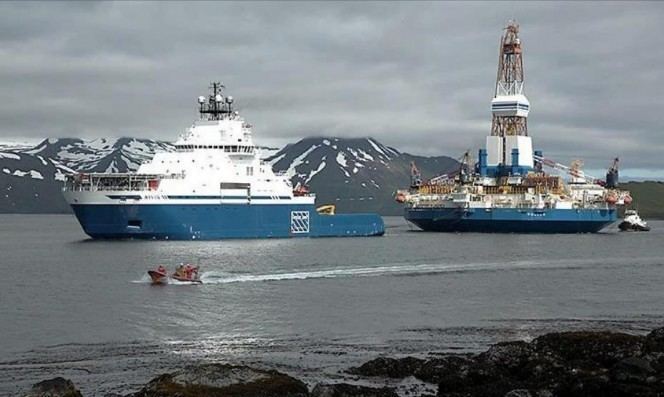
On 31 December 2012, Kulluk drifted aground after the towing line to the icebreaking anchor-handling tug Aiviq parted in heavy weather. While the rig was recovered, the repairs were not deemed feasible and Shell decided to scrap the unit in 2014.
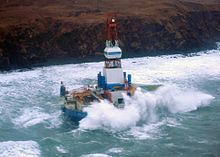
Career
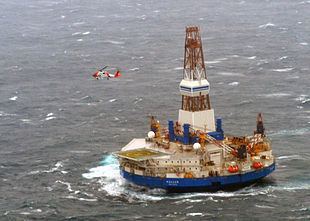
From 1983 to 1993, the rig was operated by Gulf Canada Resources in the Canadian Arctic. She was mothballed in 1993, and in 2005 she was acquired by Royal Dutch Shell and underwent intensive refurbishment. In January 2006, Shell awarded a contract to manage and operate Kulluk to Frontier Drilling (now part of Noble Corporation). In 2007, there was an industrial accident on board Kulluk while she was undergoing refurbishment, causing the death of a man.
2012 grounding
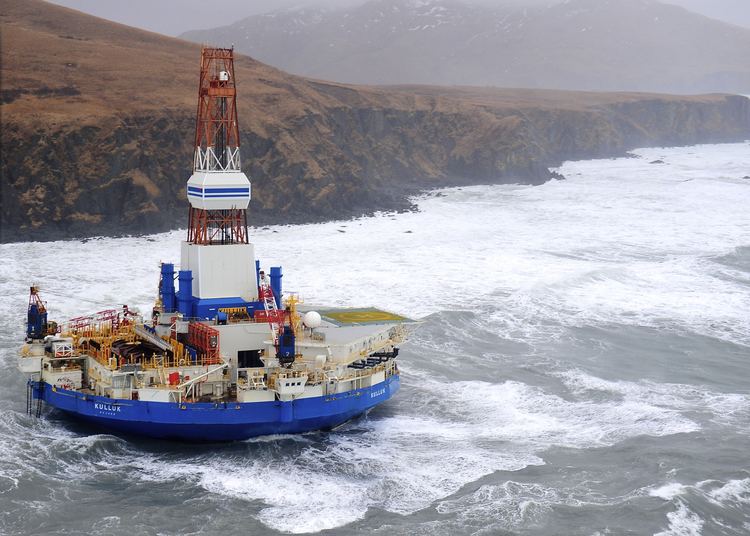
On 31 December 2012, Kulluk drifted aground off Sitkalidak Island in the Gulf of Alaska. Up until October the rig had been working in the Beaufort Sea, off the Alaska North Slope. She was being towed to her winter home in Seattle when she encountered a storm, and the incident occurred. The US Coast Guard evacuated her 18-man crew on 29 December. On New Year's Eve, tug crews were ordered by the US Coast Guard to cut the rig loose, leading to her grounding.
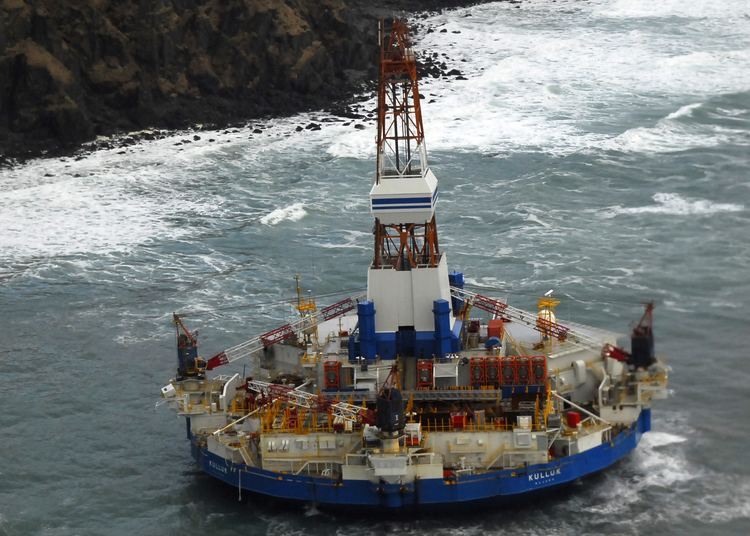
Kulluk's movement south for the winter was at least in part motivated by an effort to avoid State of Alaska property taxes on oil and gas extraction equipment.

It's fair to say the current tax structure related to vessels of this type influenced the timing of our departure.
The tax in question is a state property tax of 20 mills (or 2 percent) "on property used or committed by contract or other agreement for use for the pipeline transportation of gas or unrefined oil or for the production of gas or unrefined oil at its full and true value as of January 1 of the assessment year." The tax liability for the rig is estimated at between 6 and 7 million dollars, based on the value of the rig; however Shell may seek a filing extension to try to pay a lower tax rate given that the rig was grounded, potentially reducing her value, as of January 1st.
Kulluk was carrying 138,000 US gallons (520,000 l; 115,000 imp gal) of ultra-low-sulfur diesel fuel, 1,000 US gallons (3,800 l; 830 imp gal) of aviation fuel and 12,000 US gallons (45,000 l; 10,000 imp gal) of lubricants. So far the Coast Guard has reported no sign of a hull breach or fuel spill.
On January 6, 2013, Kulluk was floated from the rocks. Satisfied the vessel was seaworthy, she was towed to shelter in nearby Kodiak Island's Kiliuda Bay. After further assessment of damage, Kulluk was towed to Captains Bay, Unalaska, where she was loaded on the heavy lift ship Xiang Rui Kou and departed for Singapore for repair and updates around 26 March 2013. Until February 2014, she remained at Keppel FELS Pioneer Yard shipyard in Singapore.
On 31 October 2013, a Shell representative hinted that Kulluk may not be brought back into operation. On 27 February 2014, Kulluk was again loaded on Xiang Rui Kou which carried the mobile drilling unit to a Chinese scrapyard.
Design
Kulluk was ice-reinforced with 3 in (76 mm) thick, reinforced steel, and a double-sided funnel-shape hull with flared sides enabling her to operate in Arctic waters as moving ice was deflected downwards and was broken into pieces. The vessel was moored with a twelve-point anchor system. Her rated water depth for operations was 400 feet (120 m). Her drilling depth was 20,000 feet (6,100 m).
Kulluk originally had no propulsion and had to be towed to location. In 2006, Shell contracted Aker Arctic to evaluate the feasibility of adding a thruster-aided propulsion to the drilling barge. In 2007, Kulluk was fitted with two 62-tonne, 2,000 shaft horsepower (1,500 kW) ThrustMaster hydraulic overboard azimuth thrusters, the largest ever supplied by the company, to provide the platform an ability to move between drill sites and improve her operability in ice. However, before the system had been installed completely, the project was already delayed and subsequently halted due to regulatory and operational changes. In 2011, it was decided to remove the thrusters while Kulluk was on the shipyard and sell them, turning Kulluk into an unpropelled drilling barge again.
